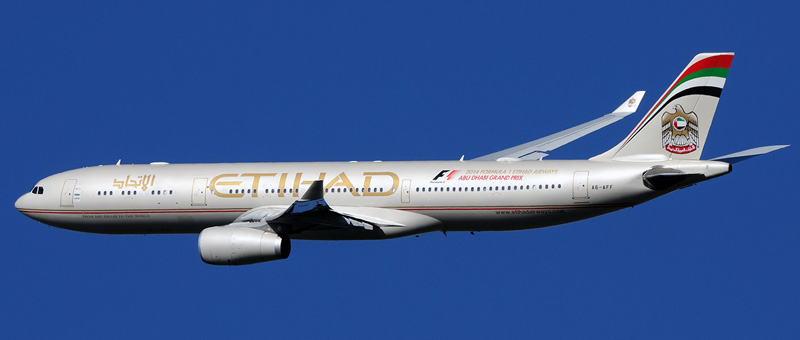
Seat map Airbus A330-300 Etihad Airways. Best seats in the plane
Airbus A330-300 is used by Etihad Airways on long-haul flights.
Seat map of the Airbus A330-300 (333)
This airplane may transport 231 seats in three classes: first, business and economy.
First class may accommodate 4 passengers on 8 closed suites that are located in two rows. The only disadvantage of the seats of the 1st row is location of the lavatory and galley in front.
Business class offers 32 flat bed seats that have 180 degree recline. These seats are located in 8 rows that have 1-2-2 configuration. 2 rows are located in the first section. Location of the galleys behind may cause discomfort to passengers of the seats of the 6th row.
Behind the exit row the second section of business class seats is located. There are 6 rows of seats here. Passengers of the seats of the 7th row will take advantage of extra legroom. However, the noise from the galley and lavatories in front may be bothersome.
The seats 9A and 9K have misaligned windows.
Possible location of the bassinet with infant behind may represent problem for passengers of the seats 12D and 12G.
Economy class contains 191 standard seats that are located in two sections. Most of the seats of the economy class have 2-4-2 configuration.
First section consists of 8 rows There are totally 64 seats here. Passengers of the seats of the 15th row will feel comfortable thanks to extra space for their legs. Among disadvantages of these seats: reduced width of the seats and lack of floor storage during take-off and landing. Passengers with infants are often seated on the seats 15DEFG as they offer bassinet locations.
Location of the lavatories behind may cause discomfort for passengers of the seats 21C, 21D, 21G and 21H as well as for passengers of the seats of the 22nd row. Limited recline is another disadvantage of the seats of the 22nd row.
The second section of economy class seats is located behind the exit row. The seats of the 23rd row offer extra legroom. But these seats are narrower than standard as the tray tables are in the armrests making them immovable. Other passengers tend to gather in the area of these seats while waiting to use lavatories causing discomfort to passengers of these seats. Also these seats have no floor storage during take-off and landing. For passengers with infants the seats 23DEFG offer bassinet locations.
Due to awkward transition of the seats from 4 to 3 the seats 34D and 34G are often bumped by other passengers and service carts but the seats 35DFG may have limited legroom.
Because of the curvature of the airplane the seats AC and HK of the rows 34-37 may feel narrower and cramped and passengers of these seats may feel neck strain as TV screens are located on the back of the seats in front that are misaligned.
The main disadvantage of the seats 38D and 38G is proximity of the galleys.
The seats 38AC, 38HK and 39DFG are considered bad seats as passengers of these seats will be among the last to deplane, these seats are less reclining that standard and are located close to the galleys.
Usefull information about “Etihad Airways”
- Rating and reviews about “Etihad Airways”
- Airbus A330-300 Etihad Airways. Photos and description of the plane
- Etihad Airways – company description and aircrafts fleet

